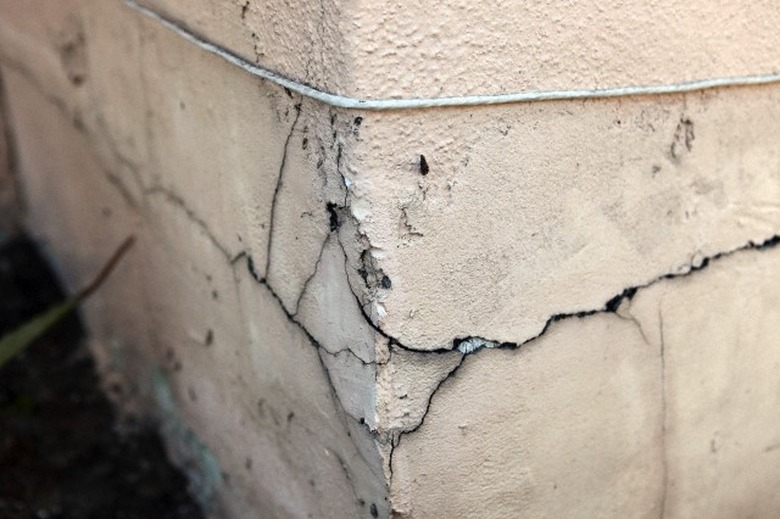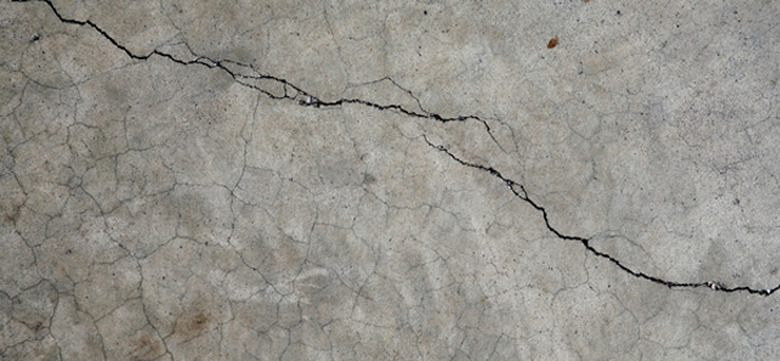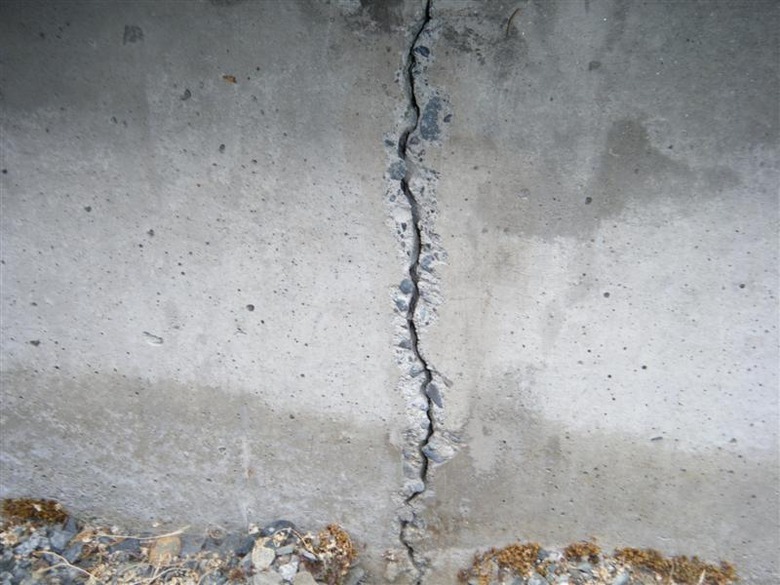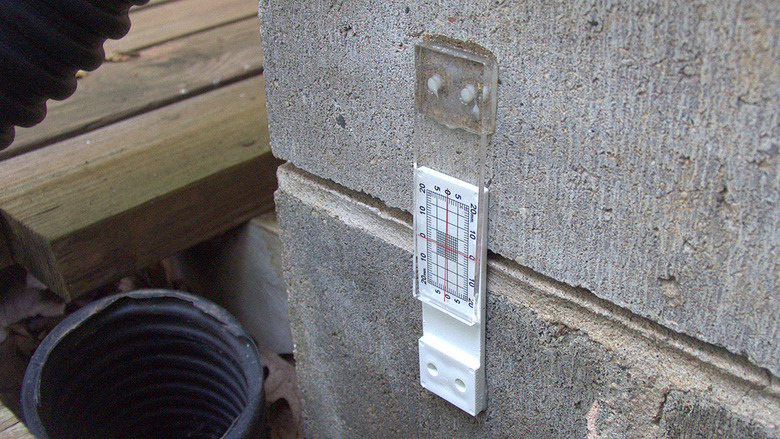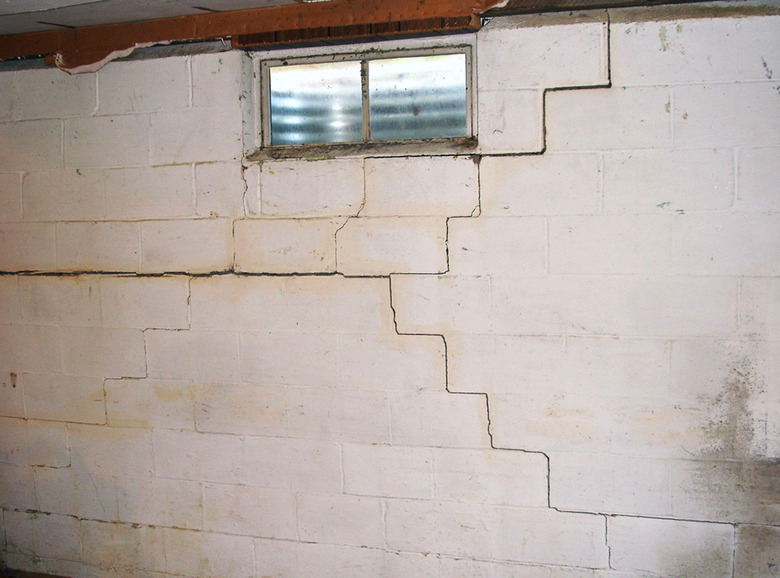Foundation Cracks: Should You Worry?
Discovering cracks in your home's foundation can be alarming. Depending on the age of your home, the nature of the foundation crack, and whether it seems to be enlarging or not, that crack can either be fairly benign or signal a potentially catastrophic problem. To determine if you should be worried—and how worried—it helps to understand a little about why cracks happen and what you should do about it.
Foundation Cracks Due to Shrinkage
Foundation Cracks Due to Shrinkage
Concrete shrinks as it hardens and cures. A less than optimum concrete mix can exacerbate this shrinkage. Shrinkage cracks are especially common in poured concrete foundations for the simple reason that the volume of uncured concrete is greater. Shrinkage cracks may be only a few inches long or they may extend the height of the wall. They are often random and meandering, sometimes disappearing entirely only to reappear further down the wall. This reflects the nature of the stress upon the foundation—its being forced to cover the same area with slightly less material. You would expect to find shrinkage cracks appearing in new construction but you wouldn't expect them to form in concrete that is already well cured. Shrinkage cracks do not usually indicate structural weakness, but because they generally extend through the wall, they can open up a pathway for possible water or insect infiltration.
Foundation racks caused by shrinkage typically stabilize after the concrete has cured. If the cracks continue to widen or if your home is not newly constructed, that indicates that your foundation problems are likely not caused by shrinkage.
Foundation Cracks Resulting from Subsoil Settlement
Foundation Cracks Resulting from Subsoil Settlement
Another cause of foundation cracking, one that is especially common in new construction, is uneven settling of the subsoil beneath the foundation footings. Settlement cracks occur especially when one portion of the foundation settles more than another part. Cracks resulting from uneven settling of the subsoil may be uniformly wide or slightly wider at the top, and they will be more-or-less vertical or stair-step diagonally on a masonry block wall. On a stone wall, due to the irregularity in size and placement of the stones, when cracking occurs, it is correspondingly irregular.
The critical factors to consider with cracking due to soil settling are the width of the crack and whether the settling has subsided. You should be able to judge whether the movement of the affected wall parts is vertical or if one part of the wall seems to be moving away from the other part. A wide or growing gap could indicate an impending structural problem—one that calls for the services of a professional.
Saturated Earth Against the Foundation Can Cause Cracks
Saturated Earth Against the Foundation Can Cause Cracks
In both new construction and well-established homes, excessive moisture around the foundation can produce cracking and even foundation failure. Every foundation below grade level is subject to asymmetrical forces with the earth loading pressing inward and nothing inside to press back to offset the load. Only the strength of the foundation wall itself is available to counteract the forces against it. Heavy, wet soil exerts a lot of pressure inward on foundations. Soil swells when saturated and that extra volume has to go somewhere. In cold regions, frost expansion can add to the problem.
The foundation cracks resulting from excess moisture in the soil may be diagonal or horizontal. If the foundation crack is horizontal, its position on the wall can help determine the cause. If the crack appears on the upper third of the foundation wall—in other words within the frost line and if the home is in a northern climate—chances are the pressure on the foundation is frost-related. Horizontal cracking high on the wall can also be the result of vehicle traffic near the house—a driveway, perhaps, or traffic from heavy equipment working nearby.
If horizontal or diagonal cracks appear on the middle or lower part of the wall, earth loading is indicated, as the pressure is greater as the earth gets deeper. Diagonal cracking in poured concrete or stair-step cracking in stone or concrete block foundations often shows up near the corner—sometimes both corners—of a wall. That's because the adjacent walls provide additional support to the wall at the ends, support that is not present in the middle.
When Should You Worry About Foundation Cracks?
When Should You Worry About Foundation Cracks?
Hairline cracks and even more substantial ones that appear to have stabilized usually are not cause for immediate alarm, although you still should take measures to patch them. Cracks that appear to be growing, however, indicate an ongoing and unresolved problem that could develop into something more serious. Foundation professionals will sometimes affix a device called a crack monitor to both sides of the crack in order to more accurately track the speed and extent to which a crack is expanding. The crack monitor usually consists of overlapping acrylic plates, one with a grid and one with crosshairs that are positioned over the grid. After recording the initial position of the crosshairs on the grid, any subsequent horizontal or vertical movement of the respective portions of the wall can be easily measured.
Most critical, and the point at which you should immediately seek the advice of a professional, is any time you detect that a portion of the wall has become misaligned with the rest of the foundation wall. If one side of a crack is no longer flush with the other side, if a course of masonry or stone is offset laterally, or if a plumb line dropped from the top of the wall shows that the wall is tilting or bowing in the middle, those are all indications that the wall may be slowly failing and headed toward complete collapse. A foundation specialist can assess the problem and its cause and recommend a solution.
Measures to Take if Your Foundation Cracks
Measures to Take if Your Foundation Cracks
If your foundation has cracked because of concrete shrinkage or subsoil settlement, there's very little you yourself can do to counteract that. If, however, your foundation has cracked because the soil on that side of your home is excessively saturated—often because water coming off the roof is not adequately directed away from the foundation—there are obvious measures you can take with gutters and downspouts. These measures will alleviate some of the wet soil pressure on the foundation.
Patching Foundation Cracks
Patching Foundation Cracks
How you repair the crack or cracks will depend in part on the size of the crack. Hairline cracks can be repaired with a vinyl concrete patching compound, using a putty knife or trowel. Follow the manufacturer's specific directions to achieve the best bond. Press the patching compound firmly into the crack. Masonry crack caulk is an effective and flexible crack sealant you can use if the crack is wide enough to accept the tip of the caulk tube. Wherever possible, patch the crack on both the exterior and interior. If cracks are 1/2 inch or wider, stuff the crack with foam backer rod before caulking or patching.
So, to answer the original question, should you worry? Unless your foundation is obviously compromised—and you'll know it if you see it—there's no point in worrying. But should you pay attention? Yes, especially if the problem seems to be growing. And should you do something? Once you've made your observations over time, respond appropriately. Consult a foundation professional if you sense serious problems or if you're uncertain. Acting beats worrying every time.
